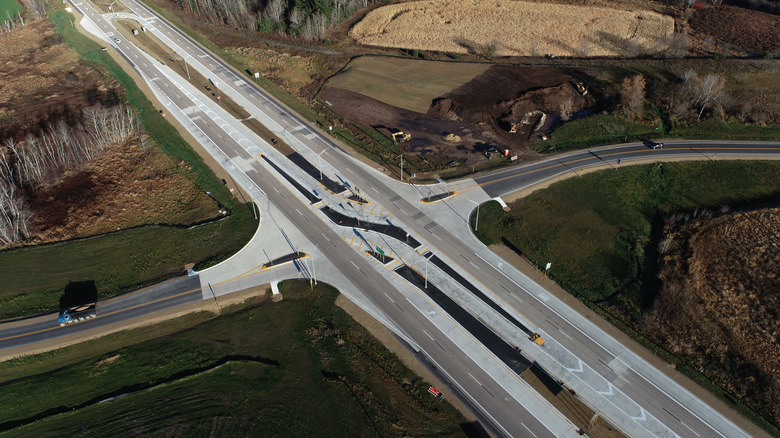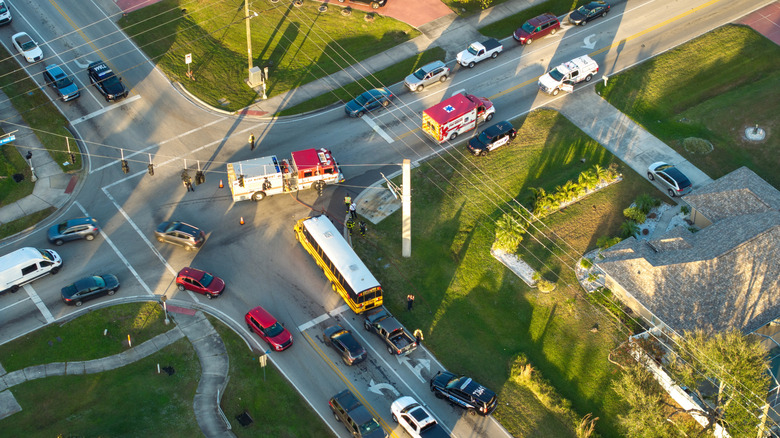Here's How The RCUT Intersection Safely Moves Traffic Around
When it comes to safe driving, there's only so much automotive manufacturers can do to ensure the vehicles on the road will keep drivers shielded during accidents. One other important factor when it comes to on-road safety is the road itself. There have been numerous engineering feats that have created safer roads, from automatic stop lights and roundabouts to runaway truck ramps.
One of the more recent innovations for on-road safety is the restricted crossing U-turn (RCUT) intersection. According to the Department of Transportation (DOT), "Reduced left-turn conflict intersections are geometric designs that alter how left-turn movements occur. These intersections simplify decision-making for drivers and minimize the potential for higher severity crash types." That basically means that, as drivers reduce the number of left turns they make at intersections, the number of accidents at these intersections also decreases.
RCUT intersections, also referred to as J-Turns, work by eliminating the left turn from the side road onto the main road, instead forcing the driver to make a right turn onto the main road to begin. From there, the driver stays in the left lane of the road they turned onto, where a turn lane is provided, allowing them to make a U-turn. After the U-turn, the driver can then continue on the road, or turn right onto a through street. The DOT says that installing the RCUT intersection can increase throughput (the number of vehicles moving through the intersection at a time) by 30% and result in a 40% reduction in travel time.
Why are RCUT intersections safer?
According to data compiled by the Department of Transportation's Federal Highway Administration, replacing a two-way stop-controlled intersection with an RCUT intersection will see, on average, a 54% reduction in crashes causing fatalities and injuries. The safety benefits don't stop there, though. When an intersection with signals is replaced by an RCUT intersection with signals, there is a 22% reduction. The most significant reduction in crashes is seen when RCUT intersections replace intersections without signals. In those situations, crashes are reduced by 63%.
One of the ways RCUT intersections reduce crashes is by eliminating many of the conflict points that arise in typical four-way intersections. At normal four-way intersections, with one lane going in each direction, there are 32 potential conflict points that arise. There are 16 conflict points when crossing the intersection, either straight through or making a left turn, eight conflict points when vehicles are merging after turning, and eight conflict points when vehicles are diverging.
For RCUT intersections, there are 14 conflict points that vehicles can find themselves in. There are only two crossing conflict points, which is far less than the 16 in a typical four-way intersection. For merging and diverging, there are only six conflict points each. That means there are more conflict points just when crossing a four-way intersection than there are in the entirety of an RCUT intersection.

